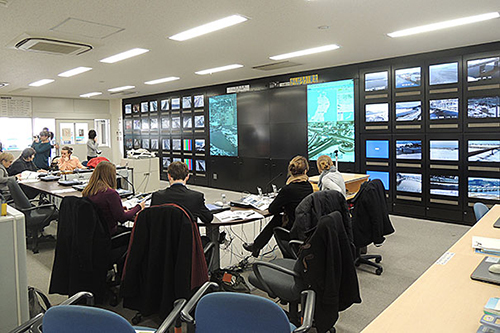Harvard Gazette: Out of Disaster, a New Design
By Corydon Ireland, Harvard Gazette
On Christmas Eve, Maria Ignacia Arrasate, M.Des.S. ’14, was fly-fishing in southern Chile. She checked her smartphone and got some good news: You won.
Natalia Gaerlan, M.U.P. ’14, got the same good news. The message popped onto her monitor while she was Skyping with family in Europe.
“You” was a team of six students at Harvard’s Graduate School of Design (GSD). “Won” meant finishing first in an international academic competition.
In September, Toyo University in Japan invited 13 university design programs, including three in the United States, to gather teams and answer a challenge: In 30 pages or less, lay out solutions for helping the remote eastern Tohoku region recover from its triple disaster of March 2011: earthquake, tsunami, and nuclear meltdown.
Like most such competitions, the ground rules for Tohuku Recovery were quite specific. Competing teams had to address 11 policy directives, including safety, energy, transportation, and pre-disaster planning. The solutions also had to be sustainable. The challenge was like a two-month mini-course in all that matters for urban planners, said team adviser Jerold Kayden, the GSD’s Frank Backus Williams Professor of Urban Planning and Design. (Coincidentally, he is teaching a pioneering course this semester on design competitions.)
The Harvard team had an entry ready by mid-November. “Here Today, Here Tomorrow” was jammed with maps, tables, and pointed text, proposing 16 strategic interventions in seven areas. Most were in the planning and policy realm, as intended by the competition.
Read the entire article on Harvard Gazette.

